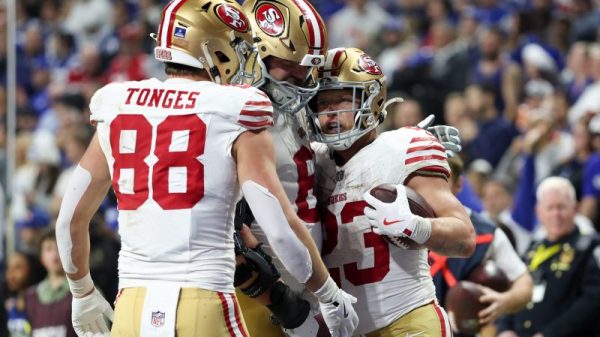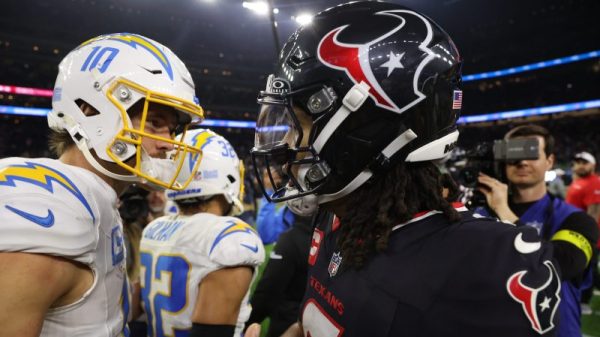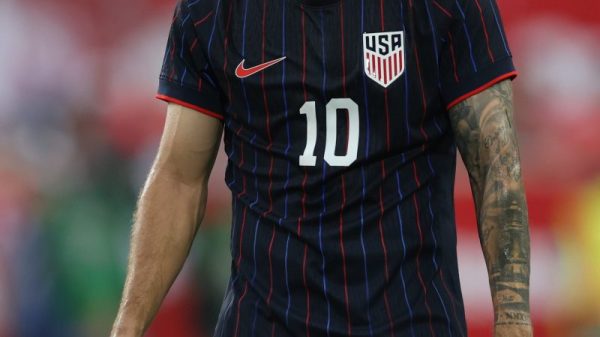PARIS — In the parlance of the NCAA, the term ‘Olympic Sports’ carries a dismissive connotation.
These are the sports that don’t make money.
At any major university, the list of non-revenue sports programs is a lot longer than the revenue sports. Dig into the numbers for most NCAA Division I athletics departments, especially in major conferences, and they’ll typically look like this: Football pays for everything. Men’s basketball might pay for itself. That’s about it.
Such reality reflects how lopsided the rooting interest tends to be from alumni, boosters and the general public. Most of the time, Americans don’t pay much mind to the ‘Olympic Sports.’
Until, that is, those sports actually are Olympic sports.
2024 Olympic medals: Who is leading the medal count? Follow along as we track the medals for every sport.
For about two weeks every four years, Americans tend to care an awful lot about swimming and diving and gymnastics and track and field and volleyball and rowing and, really, any U.S. athlete who is poised to add to our medal total.
That makes this special. It’s a moment to celebrate and notice those who don’t usually get attention. All the American families in Paris who made the trip for these Olympics, as well as the many youngsters watching at home, they’ve been exposed to something rare and unique. They’ve been enthralled by sports they wouldn’t normally watch and endeared to the pride of rooting for a nation and a flag, rather than a pro or college team.
That creates impactful memories and examples, carrying beyond one chosen sport.
‘Something that I watched as a kid was swimming and gymnastics,’ said Team USA’s Nelly Korda, the world’s No. 1 women’s golfer and an Olympic gold medalist in Tokyo. ‘… As a kid, I watched so many athletes and all their raw emotions on that podium when their flag goes up and the national anthem. And when I finally got to do it myself, there was a massive rush of emotions. I had a couple tears roll down my face.’
Korda didn’t play college golf. She turned pro at 18. But her two USA teammates this week at Le Golf National are Lilia Vu, who was an All-American at UCLA, and 21-year-old rising star Rose Zhang, who won the 2022 and 2023 NCAA individual championships at Stanford.
➤ The USA TODAY app gets you to the heart of the news — fast. Download for award-winning coverage, crosswords, audio storytelling, the eNewspaper and more.
There are so many other examples at these Paris Games of athletes from ‘Olympic sports’ in American colleges. So many great stories.
Stories like Team USA’s Lauren Scruggs, 21, who won a gold and a silver in fencing at these Olympics, becoming the first Black American woman to medal individually in the sport. Scruggs won a national championship as a part of the fencing team at Harvard.
‘Fencing is largely, certainly has been, a non-Black sport,’ she told reporters at these Olympics, ‘so I hope to inspire young Black girls to get into fencing and to think that they can have a place in the sport.’
According to the NCAA, more than 1,200 current, former or future athletes were down to compete in these Olympics for 125 countries, representing 251 universities. Of those, only 385 athletes were on Team USA. College programs are a global feeder system for the Olympics.
That’s what is at stake as NCAA athletics enters a phase in which no one seems to know what happens next.
A massive problem on the horizon: Most of the ‘Olympic Sports’ programs are on the wrong side of the economics, and belts are going to have to get tighter on many campuses.
In addition to conference realignment that disregards geography, there has been the emergence of NIL compensation and no-strings transfers. It’s all combining to make college sports much more expensive for schools.
Big-time athletics departments have money, of course. But they’ll need more and more to keep sustaining competitive programs and travel them all over the continent for conference play.
When it’s football and basketball? Sure, no problem.
But other sports? We’ll see. It’s easy to fear the direction this is headed.
‘This is unique what we provide in the NCAA. It’s been said a lot: It’s the envy of the world,’ said USA men’s volleyball coach John Speraw, who also coaches the program at UCLA. ‘ … I think there’s a lot of questions about this right now. I think there’s a lot of concern. I think the concern is justifiable.’
In January, California’s Loyola Marymount announced it would drop six of its 20 athletics programs at the end of the school year: men’s and women’s track and field, men’s and women’s rowing, women’s swimming and men’s cross country.
‘The NCAA landscape is changing rapidly,’ LMU athletics director Craig Pintens said in a news release announcing the cuts, ‘and schools of all sizes must adapt to provide the best student–athlete experience while becoming even more competitive.’
Fewer sports programs would mean fewer scholarships. Fewer scholarships would mean fewer athletes who are being trained by fewer quality coaches and with less resources and competition. And fewer athletes would ultimately impact the Olympics, providing less opportunity for those out there watching them to aspire to the same greatness in a sport that isn’t being played at his or her high school.
A lot of budding dreams are in the hands of the colleges’ ability to navigate this period?
Gee, what could go wrong?
In a time where you can’t count on anything from the NCAA, count on this: The leadership of member institutions and conferences is going to do what’s best for them and not anyone’s Olympic aspirations. This is about self-interest and the bottom line. That’s why the volleyball team at Zhang’s Stanford will log more frequent flier miles from the Bay Area this fall than a business traveler while playing in the ‘Atlantic Coast’ Conference.
How long will athletics departments be willing to send all sports programs back and forth across the country like that? (Katie Ledecky, I’ll remind you, was a swimmer at Stanford.)
If there’s less money to go around, which major college sports teams are going to feel the sting?
Hint: It won’t be the ones feeding the NFL.
It’ll more likely be the ones feeding all these Olympians and the dreams of those who’d be next.
Reach Gentry Estes at gestes@gannett.com and on the X platform (formerly known as Twitter) @Gentry_Estes.



























